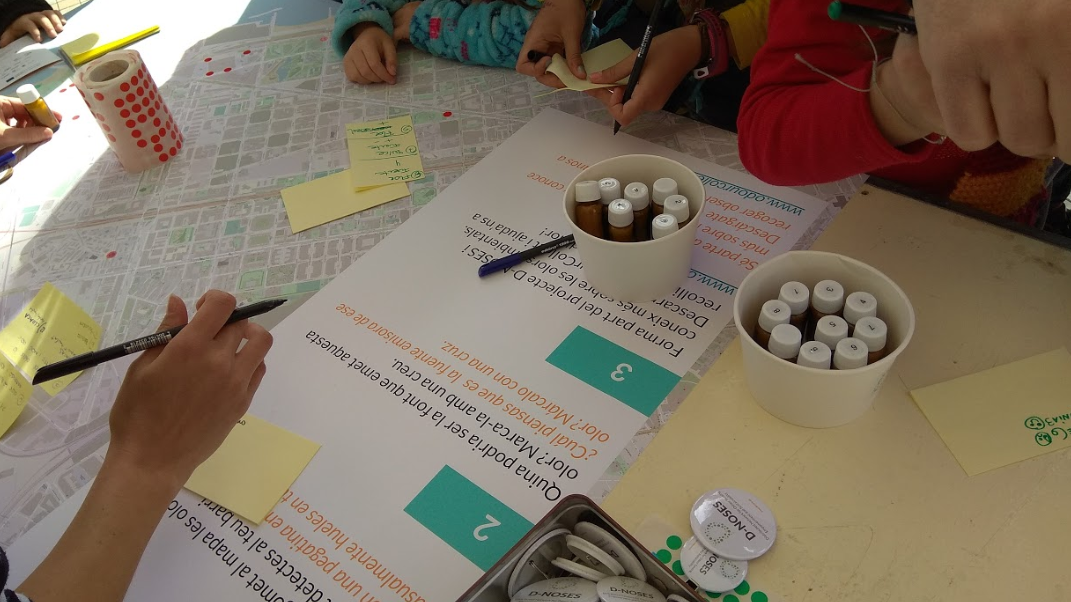Co-creating Interlinks CitSci & LivLabs

The D-NOSES Approach: Exploring and co-creating the interlinks and mutual benefits of combining Citizen Science & Living Labs methodologies
BACKGROUND/HISTORY AND CONTEXT OF THE WORKSHOP
D-NOSES is a highly ambitious EU H2020 project that is building a Citizen Observatory to literally put odour pollution on the map by scaling up from local to global levels using citizen science and co-creation strategies.
With a high-class transdisciplinary consortium from odour experts to social scientists, D-NOSES involves a quadruple helix of stakeholders in each pilot case study using the Extreme Citizen Science model – with a highly inclusive approach to engage participants regardless its literacy and socio-economic levels, cultural background, gender, etc. D-NOSES promotes dialogue and transparency amongst all actors to co-create local solutions to odour pollution issues.
Arising from the D-NOSES approach and experience, we believe citizen science and living labs have much more to share and construct together – with a space for exploration and the co-creation of interlinks for new opportunities to arise that we aim to convey in the proposed workshop.
MAIN AIM / OBJECTIVE
EXPECTED OUTCOMES
Participants will be part of a co-creation initiative for building up innovative ways of combining citizen science and living labs methodologies to tackle socio-environmental issues. First, participants will get to know the D-NOSES approach regarding citizen science, our stakeholder engagement model, co-creation strategies, and potential for social innovation.
From this approach, using different co-creation techniques, participants will be inspired to explore how citizen science and living labs initiatives can complement each other – building up new knowledge on the field from their expertise to support projects in place while constructing innovative solutions to be applied to further initiatives.
BRIEF OUTLINE / METHODOLOGY
Interactive explanations of the D-NOSES approach using theoretical aspects illustrated by practical examples from its case studies described above will be combined with participatory and co-creation exercises, design thinking, user stories and much more in order to co-create the interlinks and potential of citizen science and living labs for improving socio-environmental issues.
